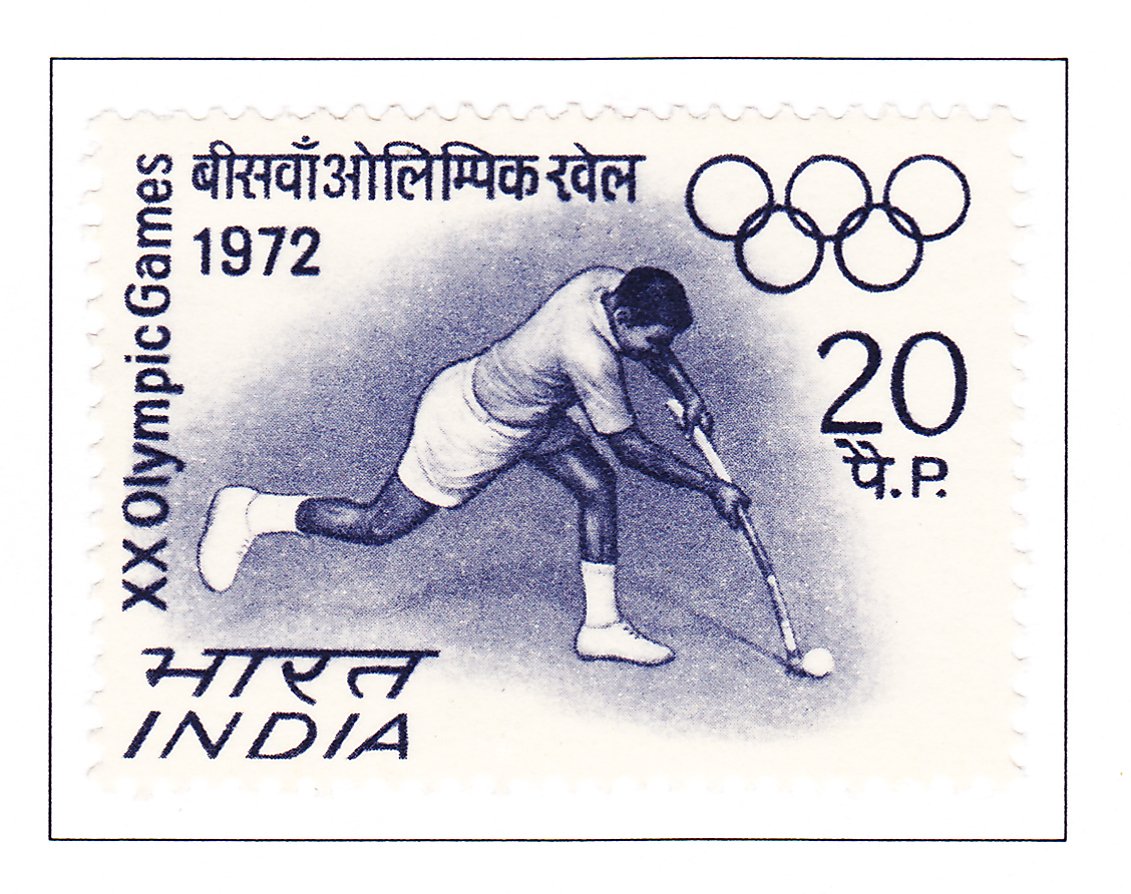Hockey player and Olympics Rings

Technical Data
| Stamp Set | Olympic Games |
|---|---|
| Date of Issue | August 10, 1972 |
| Denomination | 20 nP |
| Quantity | 3,000,000 |
| Perforation | comb 13 |
| Printer | Security Printing Press, Nashik |
| Watermark | No Watermark |
| Colors | Deep violet |
| Catalog Codes |
Michel IN 538 Stamp Number IN 554 Yvert et Tellier IN 340 Stanley Gibbons IN 658 |
| Themes | Hockey | Olympic Games | Sports |
The Olympic Games have a rich history dating back to ancient Greece, where they were celebrated every four years as a “Festival of Youth.” After being suppressed for over 1,500 years, the modern Olympics were revived in Athens in 1896, thanks to the efforts of Pierre de Coubertin, often hailed as the “Father” of the Modern Olympic Games. Since then, the Olympics have been held 16 times, with three cancellations due to World Wars.
Unlike other international sports competitions, the Olympic Games are not merely a world championship but a festival where humanity celebrates its diversity and unity. India has been an integral part of the Olympic family since 1927, with hockey being its main focus. India dominated hockey for 32 years, winning six consecutive Olympic titles.
However, India’s Olympic journey extends beyond hockey. Wrestler K.D. Jadav won India’s first individual Olympic medal in 1952, and athletes like Norman G. Pritchard and Milkha Singh have left their mark on the Olympic stage. Singh, famously known as the “Flying Sikh,” made history by reaching the finals in Rome in 1960.
While hockey remains a priority for India, the country also participates in athletics, boxing, wrestling, yachting, and shooting at the Olympics. Regardless of the outcomes, India upholds the Olympic ideal that participation is more significant than winning.
To celebrate India’s participation in the Olympic Games, the Indian Posts and Telegraphs Department issued two special postage stamps on August 10, 1972. These stamps symbolize India’s commitment to the Olympic spirit and its athletes’ endeavors on the world stage.
